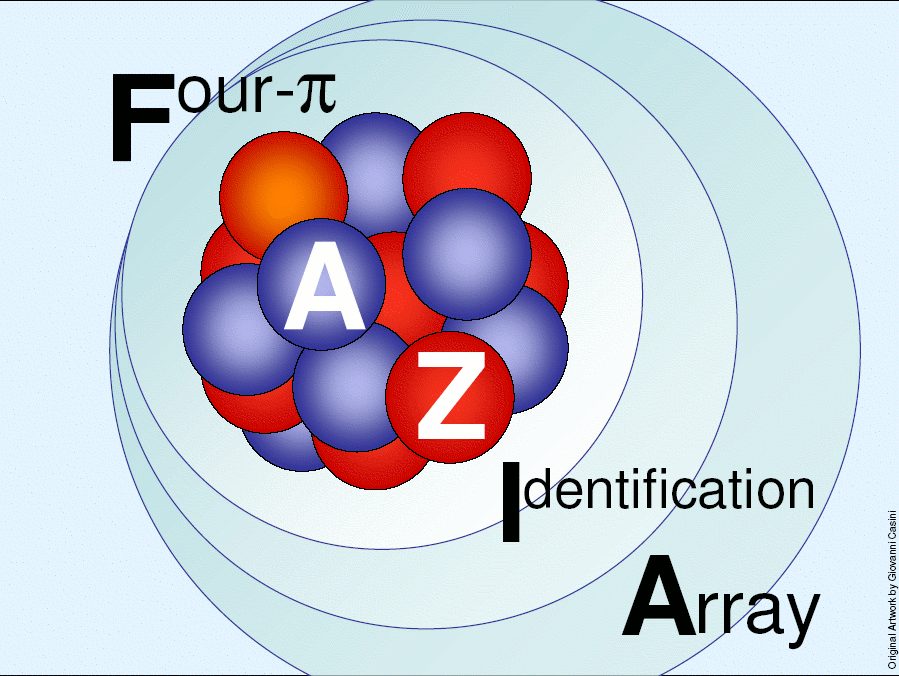Four Pi A and Z Identification Array
FAZIA is an international european initiative aiming at the construction of a next generation array for charged products detection and identification. It is organized in Working Groups and its schedule is divided in phases. The first one, which is at the end, studied in detail the optimization of Silicons and CsI(Tl) both from the detector side and from the signal analysis side. The unit module is indeed a Si-Si-CsI tri-telescope whose signal are digitized and analyzed in real time to extract the maximum information. FAZIA perfomed intense R&D on Silicon detectors and a fruitful collaboration with producers started to obtain very good chips in terms of special crystal orientation and resistivity uniformity. The second phase foresees the construction of a demonstrator of about 200 modules with the complete set of innovative items concerning FEE, mechanics, cooling and signal-trigger transport via optical fibers.
In this respect it is worth noting that FAZIA will be entirely equipped with fast digital electronics to expoit at best the information contained in the pulse signal shapes from the different detectors. The FEE and the ADC-FPGA boards will be mounted under vacuum and this asks for specific and original solutions for cooling and mechanics which are under design.
Since FAZIA has a relevant french partnership it is naturally linked to the SPIRAL2 activities; part of the funding has been obtained under the SPIRAL2 pr.phase financed within the European FPVII. FAZIA programs include measurements in different laboratories both with stable and exotic beams (LNL,LNS, GANIL) at energies from the coulomb barrier to the Fermi domain.
The FAZIA demonstrator will be coupled with different set-ups as a function of the physics and bombarding energies. The collaborations has natural contacts with INDRA (GANIL), GARFIELD, 8plp (LNL) but it is open to development with other groups. Discussions are on progress with people of FRAG and CHIMERA (at LNS) and of PARIS.

Contact person: dr. G. Casini
http://www.bo.infn.it/nucl-ex/

